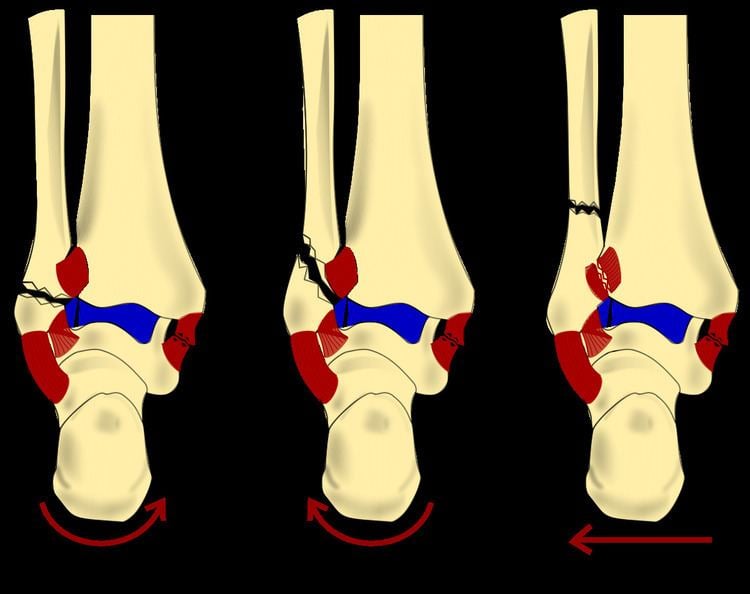 | ||
The Danis–Weber classification (often known just as the Weber classification) is a method of describing ankle fractures. It has three categories:
Fracture of the lateral malleolus distal to the syndesmosis (the connection between the distal ends of the tibia and fibula).
Fracture of the fibula at the level of the syndesmosis
Fracture of the fibula proximal to the syndesmosis.
Categories B and C imply a degree of damage to the syndesmosis itself (which cannot be directly visualised on X-ray). They are inherently unstable and are more likely to require operative repair to achieve a good outcome. Type A fractures are usually stable and can be managed with simple measures, such as a plaster of paris cast.
References
Danis–Weber classification Wikipedia(Text) CC BY-SA
